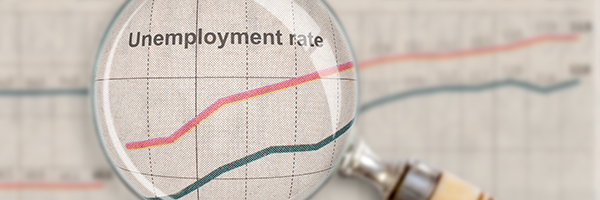
July 5, 2024 | Daily JAM, Morning Briefing, Short Term |
The U.S. economy added 206,000 jobs in June, the Bureau of Labor Statistics reported today, July 5. That was above the median forecast of 190,000 new jobs in a Bloomberg survey of economists. But even though the June number came in above expectations, the overall message in the data was that the labor market is slowing. The Bureau of Labor Statistics revised job growth in the prior two months down by 111,000. Average monthly job growth over the last three months slowed to the lowest rate since the start of 2021. And the unemployment rate rose to 4.1%

July 1, 2024 | Daily JAM, Short Term |
There won’t be any stock market reaction to the June jobs report due on Friday That’s because the market closes early on July 3 and stays closed for Friday’s Fourth of July holiday. And not because the report isn’t important as the Federal Reserve continues its search for evidence that the labor market is cooling enough to send inflammation down to the bank’s 2% target. The June report is expected to show that the economy added 188,000 jobs in June.

June 23, 2024 | Daily JAM |
Expect a make or break inflation report on Friday. Make or break that is for the possibility of an initial interest rate cut at the Federal Reserve’s September 18 meeting.

June 12, 2024 | Daily JAM |
While a slight dip in CPI inflation kept hopes alive for an interest rate cut in 2024, the Federal Reserve”s newest Dot Plot economic projections, released today, showed the central bank forecasting just one rate cut in 2024.

June 12, 2024 | Daily JAM, Morning Briefing, Short Term |
However, as all dedicated inflation watchers know, the Federal Reserve watches the core inflation rate and not the all-items rate. That index, which excludes more volatile food and energy prices, rose 0.2% month over month in May, after rising 0.3% month over month in April. The core index rose at a 3.4% rate over the last 12 months. While the dip in core inflation is surely encouraging to the Federal Reserve as it fights to get stubborn inflation down to the central bank’s target 2% rate, today’s data show a continued problem the housing prices. The shelter index–the stand-n for housing prices in this index–increased at a 5.4% annual rate in May. That accounted for over two-thirds of the total 12-month increase in inflation.

June 7, 2024 | Daily JAM, Morning Briefing, Short Term |
Employers added 272,000 jobs in May, the Bureau of Labor Statistics reported this morning. That number was well above the 185,000n projected by economists and even higher above the 175,000 in the April report. The financial markets were disappointed with the news since it pushed out the schedule for an initial interest rate cut from the Federal Reserve.A cut a the July 31 Fed meting has now been priced out by the market. The Standard & Poor’s 500 fell 0.14% today and the NASDAQ Composite dropped 0.23%

June 6, 2024 | Daily JAM, Morning Briefing |
The Federal Reserve has been telling us over and over again that it’d decision on cutting interest rates depends on the data. Among other things, the Fed wants to see a steady slowdown in the employment market reflected in the data before it cuts interest rates. But what if the data have been wrong? For months? Today in its regular Quarterly Cent of Employment and Wages the Bureau of Labor Statistics raised just that possibility.

June 2, 2024 | Daily JAM, Long Term |
Don’t expect inflation worries to go away. One thing that is keeping inflation worries at full boil is the problem of understanding why inflation has stayed higher than expected for so long. Has something fundamentally changed in the economy? And could that keep inflation higher than expected for longer than now expected? The answer according to a new and disconcerting study from the Cleveland Federal Reserve Bank is “yes.” The inflationary impacts from pandemic-era supply chain shocks have largely resolved and the remaining forces that are keeping inflation elevated are “very persistent,” Cleveland Fed economist Randal Verbrugge wrote in a report released on Thursday. Inflation may not return to the U.S. central bank’s 2% target until mid-2027.

May 31, 2024 | Daily JAM, Morning Briefing |
The Federal Reserve’s preferred measure of U.S. inflation–the core personal consumption expenditures (PCE) price index, which strips out volatile food and energy prices–rose 0.2% in April from March.That was the smallest advance in 2024, according to Bureau of Economic Analysis data out Friday. And there was more evidence of a slowing economy today.

May 30, 2024 | Daily JAM, Morning Briefing |
Friday brings more inflation data— price indexes for April personal income and spending, including the Personal Consumption Expenditures index, the Federal Reserve’s preferred inflation measure. The PCE ran at an annual 2.7% in March and has exceeded the Fed’s 2% inflation target since March 2021.

May 19, 2024 | Daily JAM |
Today’s video is The Uncertainty of Uncertainty in the Stock Market. Right now we’re seeing uncertainty on top of uncertainty. The CPI numbers just came out and April showed a slightly lower annualized inflation rate than March. The market took this as a signal that we’ve moved past inflation stagnation and have resumed the march towards 2%. This is, of course, an uncertainty. Another uncertainty is the what we don’t know about the inner thinking at the Fed. How much of a decline does the Fed really need to see to start cutting rates? Right now, according to the CME Fedwatch tool, there is a 70% chance that we’ll see interest rate cuts at the September Fed meeting. This prediction has shifted a lot in the last few months and could continue to shift. These uncertainties mean that the market may be fully priced at 5,200. Some analysts suggest we could hit 5,600 by the end of the year, making it a 15-20% year. In the short term, it’s really hard to predict how people react to all these layers of uncertainty. It’s also difficult to hedge this market so I recommend looking at individual stocks in lithium or copper that will continue to go up, even if the market as a whole doesn’t move.

May 15, 2024 | Daily JAM, Morning Briefing |
Today, May 15, the April Consumer Price Index report dangled new hope in front of investors. The all-items index annual rate of inflation dropped to an annual 3.4% rate from 3.5% in March. The core index, which leaves out food and energy prices, fell to an annual rate of 3.6%, down from 3.8% in March. Those annual rates are still way above the Federal Reserve’s inflation target of 2%. But after three straight reports where the inflation rate came in above market expectations todays report, which hit projections right on the mark, came as good news. In recent weeks Wall Street has speculated that inflation is set to resume its downward course starting with the April report. And after stalling above 3.5%, annual inflation would resume its downward path.









